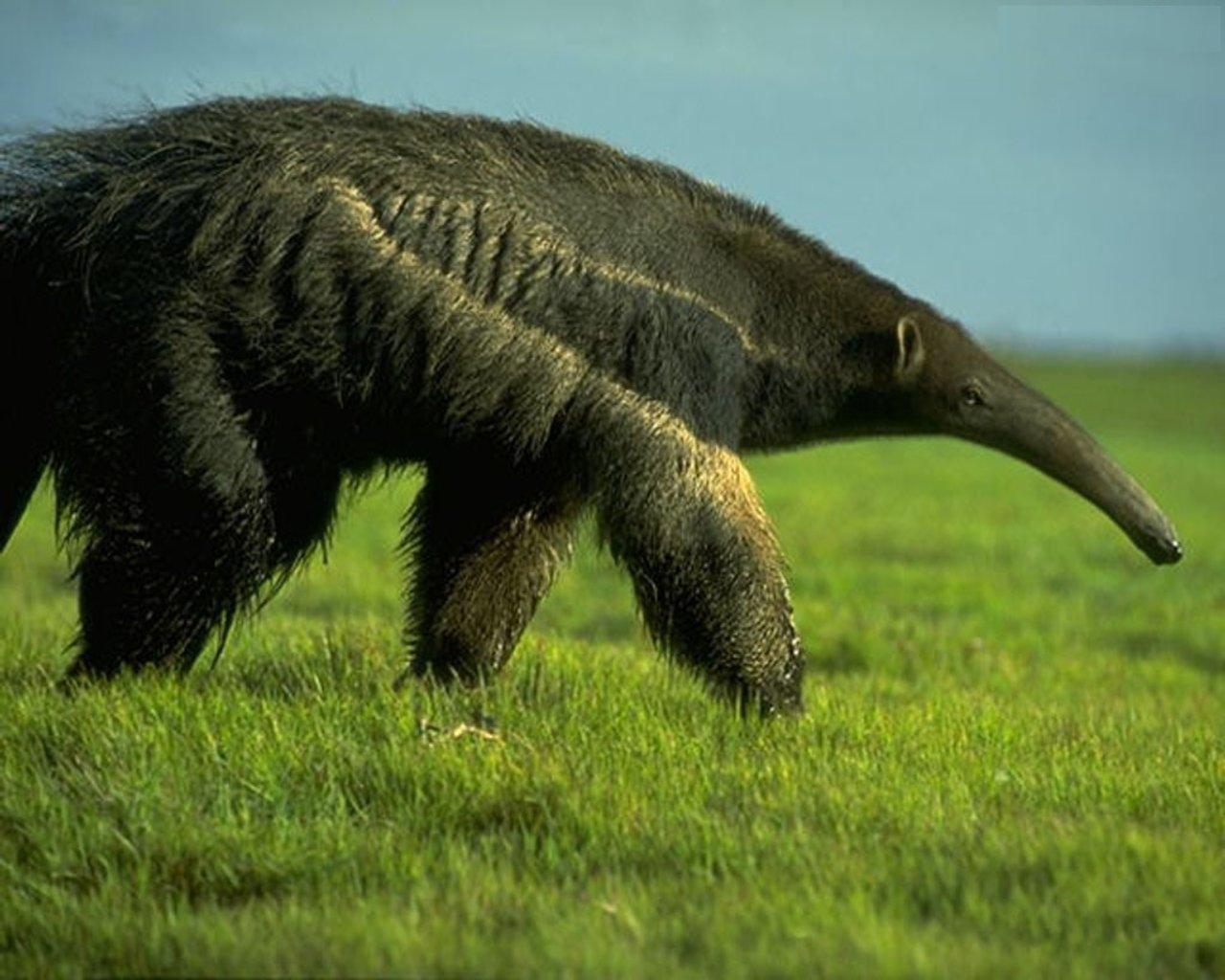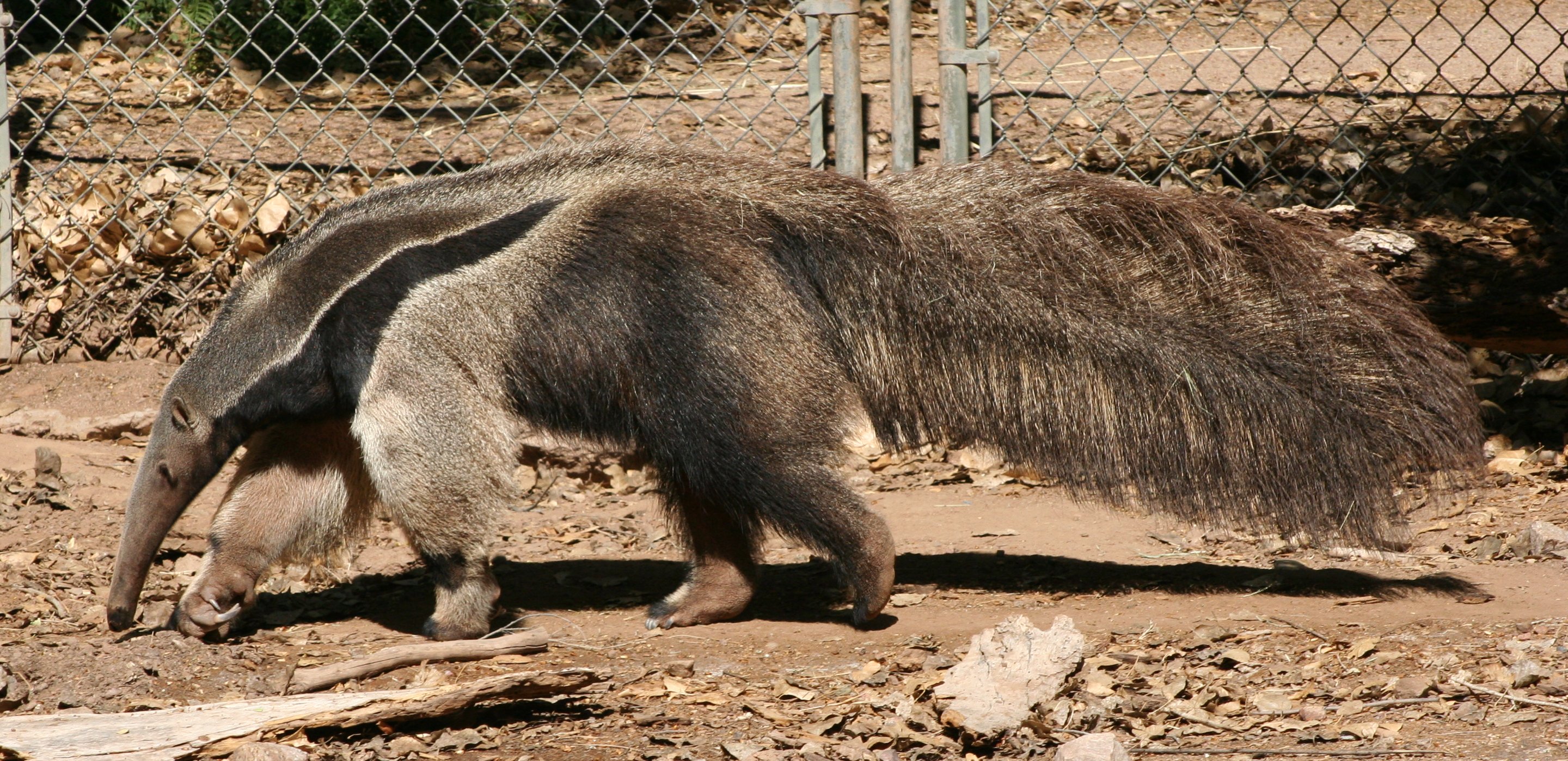Giant Anteater
The Giant Anteater is the largest species of anteater found in Southern and Central America, from southern Belize to northern Argentina. Being one of the oddest looking animals in the world, the Giant Anteaters can grow up to 8 feet in length and 140 pounds in weight.
The colour of their fur varies from dark brown to gray, and on all Giant Anteaters, a black stripe stretches from under the snout to about half of the torso. These colours help the anteater to blend in with their natural surroundings, in order to hide from their natural predators, which include jaguars and pumas, as well as other large carnivores.
The Giant Anteater detects anthills and termite mounds with it’s highly advanced sense of smell. The anteater then rips them open with it’s massive claws and feeds on the termites and ants, which they collect with their tongue, covered with large amounts of sticky saliva. A mature Giant Anteater’s tongue can reach up to 60cm (2 feet) in length and they swallow up to 30’000 ants and insects daily.
These mammals usually live solitary lives, meeting other individuals only during the mating season, the time of which has not been discovered. After a gestation period of six months, one offspring will be given birth. The young anteaters spend most of their time on their mothers’ backs and remain with the mother until about the age of 2, after which they start solitary lives. Sexual maturity is reached between 2.5 and 4 years, while their total lifespan is unknown.
The Giant Anteater doesn’t have a set regime of sleep and some individuals are nocturnal, while others are solely diurnal. They usually sleep in secluded spots, covering their body with the bushy tail and they’re easily awoken by the slightest disturbance.
The IUCN classifies Giant Anteaters as near threatened and while they do have many natural predators, the anteaters are most often able to repel them with their sharp claws. A much larger threat for the Giant Anteater are humans, who either hunt them or collide them by accident with their cars. The population of Giant Anteaters, standing at about five thousand, is slowly reducing due to all these factors.
These amusing creatures lead an interesting lifestyle and it’s a pity much of their natural habitat is being destroyed as a result of human encroachment. The population of the Giant Anteater can be expected to drop down, making the species endangered if no actions are taken regarding conservation of these animals.
Being one of nature’s weirdest experiments, having no teeth and feeding on the smallest inhabitants of the forest, the Giant Anteaters manage to grow to immense sizes and while they’re not particularly friendly to humans, they’re a very interesting part of the forest.





